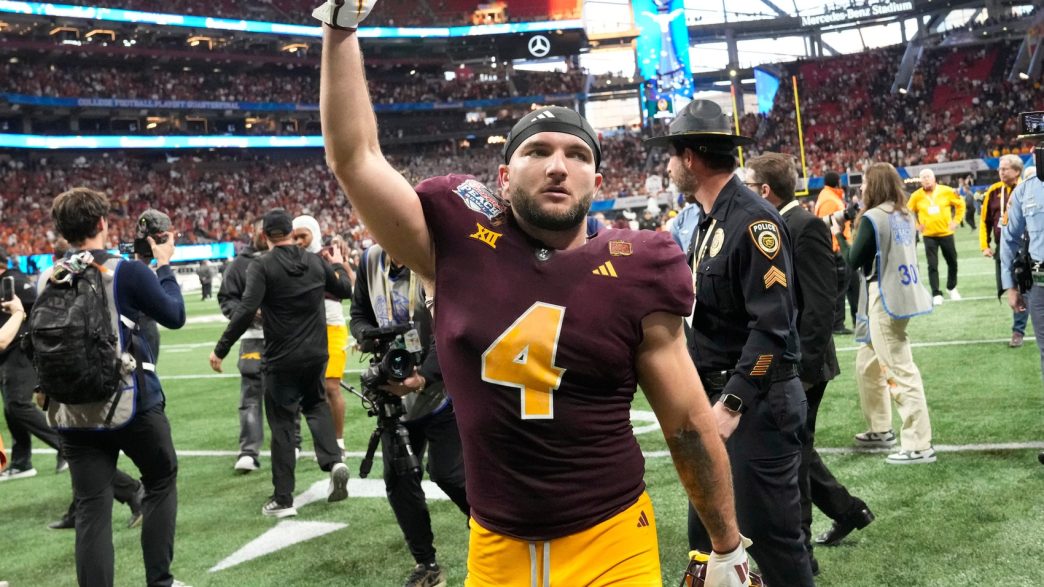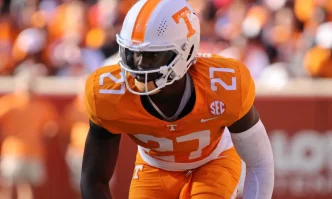The Peach Bowl showdown between Texas and Arizona State on New Year’s Day was nothing short of a thrilling spectacle, living up to its billing as part of the inaugural 12-team College Football Playoff. This game, etched in the minds of fans for its dramatic narrative, was also a textbook example of how a single moment—or lack thereof—can define a season.
Coming into this clash, Arizona State seemed down and out after conceding two early touchdowns. However, true to their fighting spirit, the Sun Devils clawed back to level the score at 24 with just over five minutes left, setting the stage for an epic finish. As the clock wound down, the Sun Devils sniffed a chance for an upset after Texas missed a critical field goal. Quarterback Sam Leavitt found his target, Melquan Stovall, for a pivotal 10-yard pickup right at midfield.
This is where the narrative takes a turn. Stovall was stopped in his tracks by a bone-jarring hit from Texas safety Michael Taaffe. The collision left Stovall on the turf, many assuming a targeting call was coming next. Such a penalty would have advanced Arizona State to Texas’ 37-yard line, with over a minute still ticking—a prime opportunity for a dramatic win.
Yet, the flag never flew. The officials deemed Taaffe’s hit clean, leaving Arizona State with a fourth down and forcing a punt. Despite a second missed field goal from Texas, Arizona State fumbled their chance in double overtime with a pair of defensive lapses and a costly interception.
This shifted focus right back to the non-call. The definition of targeting is straightforward—if the first contact is helmet-on-helmet, it meets the conventional criteria for the infraction. While officiating in the booth concluded that Taaffe didn’t meet the textbook requirements of targeting since there wasn’t a launch or a lead with the helmet’s crown, the dialogue around this call—or non-call—became the centerpiece of post-game discussions.
The Sun Devils’ head coach, Kenny Dillingham, perhaps summed it up best in his post-game comments tinged with exasperation, admitting a lack of clarity on what constitutes targeting. Dillingham referenced the ejection of Shamari Simmons in the Big 12 championship for a helmet-to-helmet hit, underscoring his puzzlement over consistency.
Although even with a targeting call, Arizona State’s kicking woes could have negated their chances. Throughout the season, their kicking unit saw three different players and only managed an 11 of 20 success rate on field goals. Placing the fate of the game on the shoulders of Carston Kieffer, a redshirt freshman who had only recently nailed his first successful field goal, might have been too weighty a task.
In the grand scheme, the lack of a targeting call raised broader questions about the implementation and communication of such critical rules. Targeting exists to safeguard players, a rule essential for the sport’s integrity. Officials must ensure transparency and clarity regarding its enforcement, a duty they owe to players, coaches, and fans—because when stakes are this high, ambiguity is not an option.







